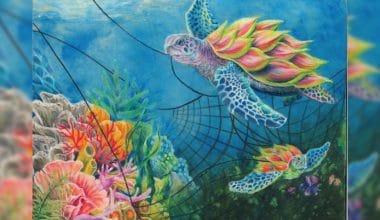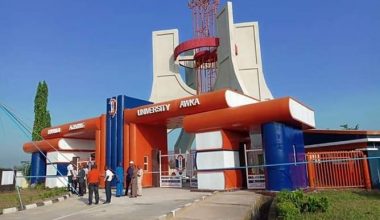San Marino is one of the smallest countries in the world. It is so small many people consider it a city inside Italy. That is why missing the country on a map is so easy. Also, studying in San Marino is an excellent opportunity you won’t want to miss.
It is located in North Central Italy and is surrounded by Italian states except on one side that borders the Adriatic coast.
However, with a population of just between 30,000 and 40,000 inhabitants, this mountainous country is one of the world’s oldest countries, with many historical buildings linking it to its medieval past.
You might want to study in San Marino for several reasons as an international student. Some of these reasons include
- The high standard of living
- Millennia worth of well-preserved history
- Stunning scenery for students who love the outdoors and mountaineering
- Duty-free shops for cheap goods and services
- Several museums with curious exhibitions, such as the Museum of Torture Instruments, The Vampire Museum, and the Museum of Curious Objects, a vast treasure troves of all things curious and unusual.
Table of contents
Cost of Living in San Marino
Because the citizens of San Marino enjoy a high standard of living (comparable to countries like Switzerland), the cost of goods and services is generally high.
For a small country, it is ranked as one of the world’s most expensive places to live. It should make the top 30 list of expensive countries to live in.
However, with prudent money management, one can enjoy the best things the country has to offer without going bankrupt.
Rent and Accommodation
How much people pay for accommodation depends on the location and distance to the City Centre. But since the country is so small, the variation in prices is too small to make any significant difference.
A one-bedroom apartment suitable for students can get as low as €450 per month. Students are advised to explore the option of sharing apartments to reduce costs.
Utilities
The prices of standard utilities such as heating, garbage collection, water, electricity, and Internet cost between €150 and $230 per month
Food
People on a tight budget can get decent meals at good restaurants for about €10. But if you have to buy food items to cook through, you would have to spend the following:
- Milk (1Liter) – €1.80
- A loaf of bread (500g) – €3
- Eggs (one dozen) – €2.40
- Beef (1kg) – €15
- Tomato (1kg) – €1.80
- Water (1.5-liter bottle) – €. 35
- Potato (1kg) – €1.5
- White Rice (1kg) – €2.00
- Onion (1kg) – €2.
- Oranges (1kg) – €3
Transportation cost
Since the country is so small, transportation options are somewhat limited. However, local transportation using a bus is generally less than €4, while using a taxi cab can cost as much as €40 depending on the length of time you require the services of the cab.
List of Universities in San Marino
San Marino boasts just two Universities. This is expected since the country is so small.
The universities are:
- University of the Republic of San Marino
- Akademio Internacia de la Sciencoj San Marino
University of the Republic of San Marino
The University of the Republic of San Marino is the country’s only internationally recognized tertiary institution.
Opened in 1985, the University is open to international students for undergraduate and postgraduate programs in about 25 courses in fields as diverse as
- A 3-year course in Design (industrial products and visual communication)
- Civil Engineering – 3 years
- Master’s in Civil Engineering
- Cosmetic surgery for both undergraduates and graduate students
- Aesthetic Medicine – undergraduates and post-graduate
- Geriatric medicine – postgraduate and undergraduate
- Criminology and Forensic Psychology – graduate and post-graduate
For more information on the courses and other services, check the university website for more details. You must use the Chrome browser to easily translate the page to a language you understand.
Admission requirements
The general admission requirements are similar to what obtains in the rest of Italy.
Undergraduate students must have a good certificate, while postgraduate students must possess relevant undergraduate degrees from a recognized institution.
Since the courses are taught in Italian, students must pass a basic proficiency test in Italian.
Students must show proof of proficiency in Italian equivalent to a B2 in the Europass Language Passport (ELP) classification test. A score equal to C1 or C2 in the ELP classification would exempt the student from taking any further language tests.
Tuition and fees
Like most Italian Universities, tuition fees in San Marino are relatively low. However, the fees depend on the number of courses and the duration of the programs.
How do I apply for a Master in San Marino?
Once you have chosen to study for a Master’s at a university in San Marino, you will need to collect the proper documents to prove that you meet the university’s requirements. Include complete personal information, previous qualifications, financial information, and a personal statement.
What documents do you need to study in San Marino?
To apply to a university in San Marino, you will be required to provide some of the following documents:
- Birth certificate;
- latest photos;
- Your passport or identity card;
- one or more letters of reference from previous employers or teachers;
- Copies of previous diplomas or certificates
- academic certificates;
- Letter of intent;
- Curriculum vitae;
- Proof that you can support your stay in the country during your studies.
- Depending on the subject or specialization of your chosen area, you may also be asked to provide results for additional tests such as GRE, GMAT, or LSAT.
The list of documents depends on the specific requirements of the universities in San Marino, so you may be asked to attach additional documents.
Application Deadlines
The application deadlines for a Master’s in San Marino are usually in summer (June-July) or winter (January-February).
More information can be obtained from the office of students affairs via the university’s website.
Recommendations
- 6 Common Mistakes You Need to Avoid as an International Student in the U.S
- Top 5 Most Affordable Countries to Study Abroad in
- Study in Harvard University: Its Tuition fees and Admission Requirements
- Low Tuition Universities to Study in Georgia
- Study in Italy: the University of Milan Ranking, Fees and Admission
- 10 Highest Paid Engineering Majors in The World | UPDATED
- Asia’s 8 Top Countries For International Students and their Top Universities
DISCLOSURE: This post may contain affiliate links, meaning when you click the links and make a purchase, we receive a commission.






Comments are closed.